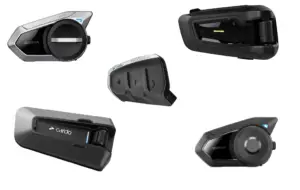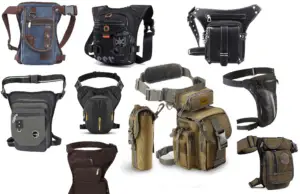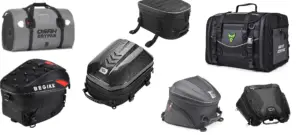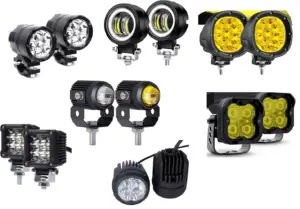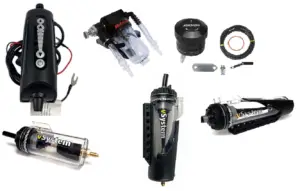I found the perfect adventure motorcycle. Let’s first imagine its ideal features: a 21-inch front wheel, suspension travel of 200 mm, weight of around 200 kg, cruise control, and a 700 cc engine. The Tenere and KTM 790/890 have been leaders in this category in recent years. But now there is a new player and Yamaha should up their game to remain competitive.
Let’s see how Tuareg is better compared to these two. However, there’s a catch.
The best adventure motorcycle should be similar to soft enduro on offroad while providing comfort and handling on asphalt similar to 1000cc tourers.
cc: Me 😊
Otherwise, what’s the point?
Contents
Is Tuareg 660 a good adventure touring bike?
You might expect me to be impressed with its off-road capabilities. We’ll discuss this later, but in my opinion, that’s not the most important aspect to highlight in this review. Obviously, the Tuareg is the lightest motorcycle in its mid-size class, with spoked wheels and extensive suspension travel. Ofcourse it is good offroad. There are no complaints regarding ergonomics, and the engine torque at low revs is good enough for riding on trails.
The real challenge for adventure motorcycles is asphalt performance. I know some people buy these bikes just for dirt riding, but that seems nonsensical to me. Any dual-sport is much cheaper and perfectly capable of traveling 100 km to a riding spot. The lighter weight of these bikes allows for more versatility. And if you opt for a hard-enduro, its weight is about half, offering even more capabilities, not just because of its weight but because it can withstand rough treatment.
Tuareg 660 Suspension
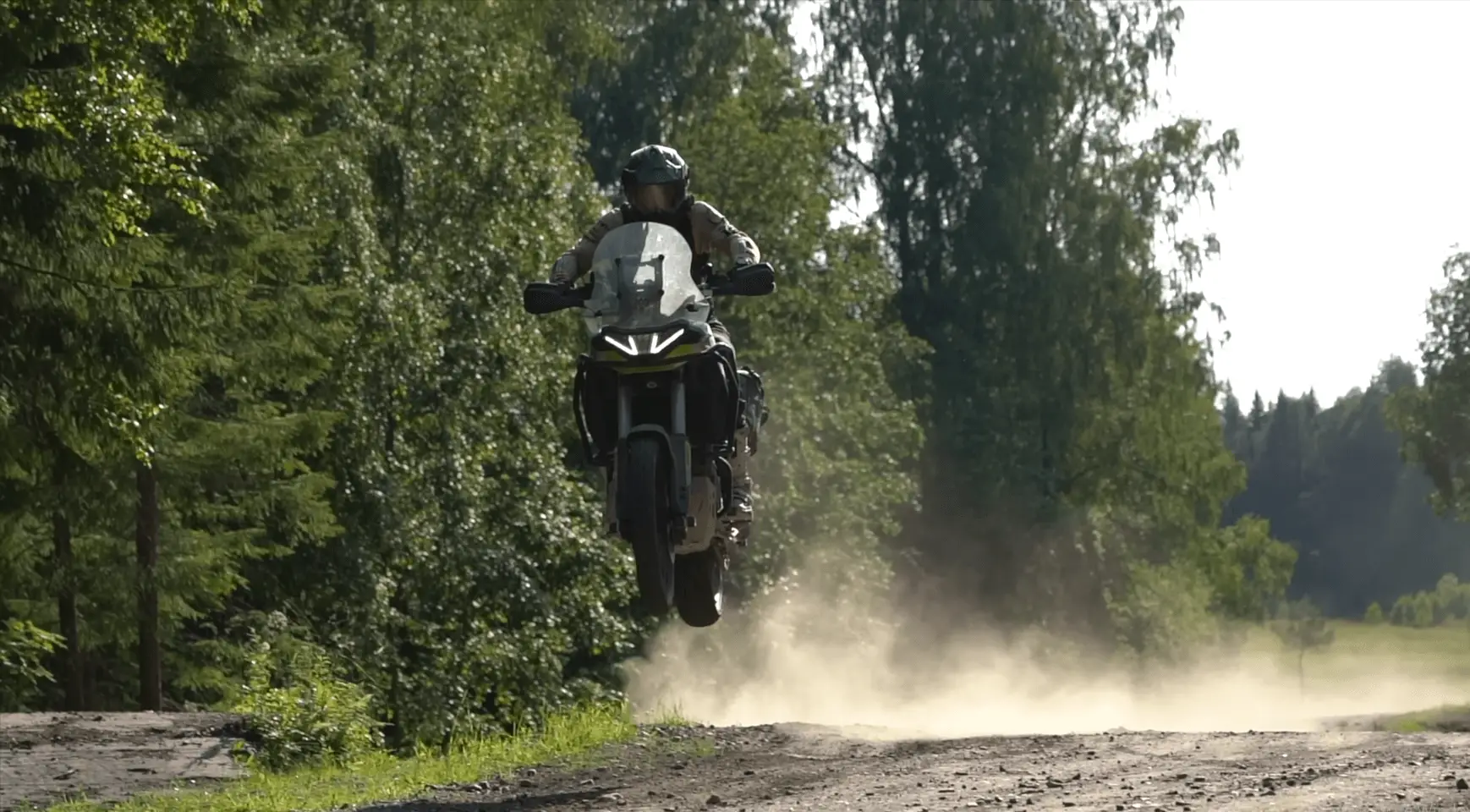
In short, adventure motorcycles are primarily touring bikes, with other features secondary. The main problem with most 21-inch wheel adventure bikes is their soft suspension, which is fine on bad roads but unbearable on twisty roads. Twisty roads mean mountains, and mountains are the essence of travel (in my opinion). It turns out that you have a kind of motorcycle for tourism, but there’s no fun in the mountains, especially if you know how road bikes perform in such conditions. This problem exists with the Tenere, Africa Twin, BMW 850 GS, and others.
I used to think that some people just prefer soft suspension, while others like it hard. But based on my circle of friends, here’s what I’ve realized: Those who don’t really like enduro or only travel on asphalt tend to like soft suspensions. They are incredibly pleased when the motorcycle easily handles speed bumps at 70 km/h. However, those with some enduro experience often prefer stiff, long-travel suspensions for more control.
It seems that the trend towards vague suspensions is because manufacturers cater to the comfort of riding on Asia’s bad roads, where the suspension tries to absorb everything. This appeals to less experienced riders.
However, the fact that too-soft suspensions don’t inspire confidence in endurists is an unfortunate byproduct. Largely, KTM is the only brand that has promoted the rigid ground-hook suspension style on adventure motorcycles, but even they are not perfect, especially with the 790-890 models. The R is too stiff, and the S has a non-adjustable fork, so it’s not ideal for all conditions. Plus, KTM’s approach to neglecting normal linkage progression is a compromise.
Then there’s the Tuareg, which arrives with a perfectly tuned suspension. Like KTM, it focuses on control rather than comfort. Put a novice rider on the Tuareg, someone who can’t manage weight properly, always rides sitting, etc., and they will find their hands aching on rocky terrain and themselves being jolted out of the seat. In terms of ride comfort on bad roads, the Tuareg suspension will fall short – this motorcycle isn’t about that at all.
On the other hand, unlike the KTM, the Tuareg offers more suspension range, partly due to its linkage progression. If desired, this suspension can be made more user-friendly. The main feature is how superbly the Tuareg handles twisty roads, keeping in mind that it is primarily a motorcycle for traveling. Moreover, I’m not referring to any secret settings – simply set the standard settings from the manual for a rider with a load, and you’ll enjoy precise handling that 95% of adventure bikes can’t match.
For perspective, not every crossover can offer the same level of clarity. And here is a dirt bike with 240 mm of travel, which is astonishing. It’s clear that if you brake actively, the Tuareg dives deeply; it’s clear that this isn’t a sport tourer’s handling, but Aprilia maintains a stable arc in corners and transitions smoothly from side to side. You don’t need to worry about catching or slightly adjusting in corners – it’s on par with really good sporty-adventure motorcycles. Plus, there are lightweight tubeless wheels here, contributing to its superior turning ability at speed compared to the Tenere 700.
In the Tuareg, both the front and rear suspensions are fully adjustable. Considering the motorcycle’s rather moderate price tag, this is a plus. For example, the 850 GS or the basic KTM 890 Adventure are more expensive, but their forks are completely unadjustable. In contrast, on the Aprilia, the shock preload is adjusted with a normal knob, and you can twist it by hand without dismounting the motorcycle. It’s also easy to install preload handy adjusters on the fork; rebound and compression are adjusted front and rear with the same screwdriver. Unlike the KTM, a full reconfiguration here takes only a couple of minutes.
For dirt, the standard settings are not suitable; you need to soften them, especially the fork. The range is sufficient to create a fantastic, elastic suspension for dirt, although it won’t become completely soft. In the larger 230-240kg bike class, good suspensions are common; for instance, I’m fond of the 1290 SAS suspension. However, in bikes around 200kg, my favorite suspension is now the Tuareg’s. Additionally, the Tuareg has good geometry, as does the Tenere 700. Considering its long-travel suspensions and large wheels, the Tuareg is incredibly stable and maintains its composure on the highway at speeds of 160-170 km/h – you can even ride hands-free, while other adventure bikes with long-travel suspensions are already wobbling slightly.
Tuareg 660 Features
Another advantage of the Tuareg on pavement, compared to the Tenere and, for example, the Transalp or VStrom 800, is its electronics. I won’t delve into the multi-level traction control, although it’s beneficial when riding with mud tires on wet asphalt.
Cruise Control
The main feature for me is cruise control. It’s a necessary function for a touring motorcycle, but it’s especially valuable on a light adventure bike. After a tiring day on a dirt track, being able to turn on the cruise control and relax on the highway is invaluable. The lack of cruise control is a significant drawback of the Tenere.
There is only one annoying thing regarding cruise control. When the cruise control is on but not active, a green light constantly blinks on display almost in the same spot as the turn signal indicator, drawing attention to itself, especially at night. This has no logical sense. In many cars, cruise control is enabled by default, and we manage without a blinking lamp.
Riding Modes
I also appreciate how the riding modes are implemented on the Tuareg. Usually, I don’t utilize the modes much on motorcycles, typically opting for the sporty one, but it’s different with the Tuareg. There are four modes, two of which are customizable – in fact, those were the only ones I used. Here, for the modes, you can change the throttle response and the engine braking force, plus adjust the level of traction control and ABS, including complete switch-off.
For instance, on twisty roads, I prefer a sharp throttle response and strong engine braking to minimize brake usage before corners and on descents. Plus, when there’s a decrease in speed on the highway as you approach a city or tunnel, you can slow down using engine braking without engaging the brakes.
In the city, on the other hand, I prefer to coast more, noticing a red traffic light from a distance and simply releasing the throttle, allowing the motorcycle to slow down gently.
Off-road, when it’s slippery, I like a smooth throttle for precise control, or, conversely, a sharp throttle if it’s not slippery and the terrain is rocky, for instance when I want to pop the front wheel before rock or a large pothole. But in any case, I prefer average deceleration from releasing the throttle, so that, on one hand, in a standing position when the throttle is closed, it doesn’t cause an over-the-handlebar situation, and on the other hand, it slows down more effectively before turns and on descents.
Traction Control and ABS
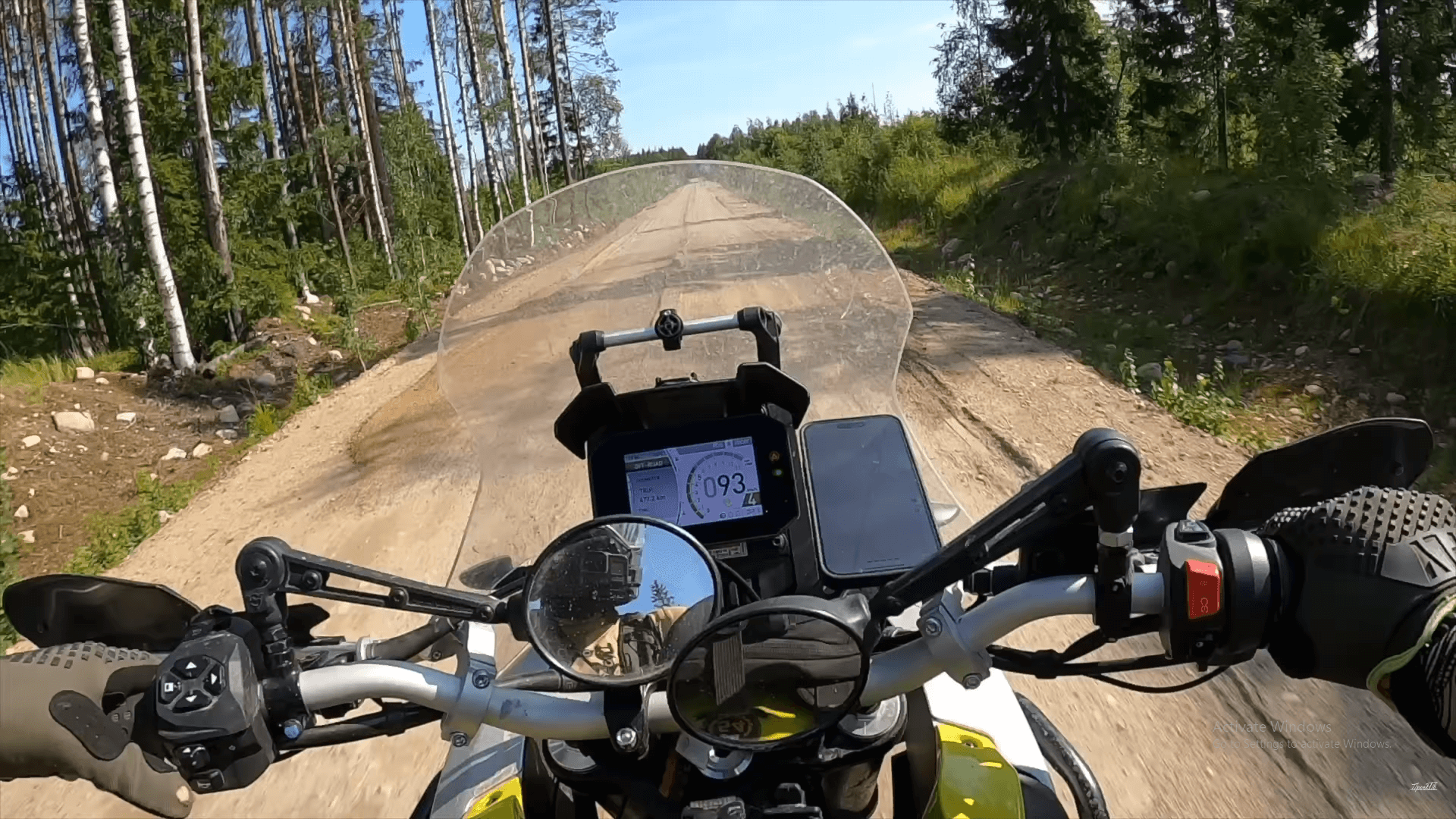
I completely disable traction control if there are slides, or leave a little if the conditions are quite simple and fast. I keep the ABS on the rear wheel on rocky terrain, and remove it in wet mud. The front ABS can also be disabled if needed. These might seem like minor details, but they allow you to adapt to the desired riding style.
And yes, since such mode settings exist, the throttle is obviously by wire, which means it is easy to maintain speed and twist without tiring the hand. The levers are also light, unlike on the Tenere 700, where the clutch is stiffer than I’d like.
Display integrations
On the Tuareg, like on the KTM, you can see turn-by-turn navigation with arrows, control music from the handlebar, etc., but this is all rather unnecessary.
Other nice features
Tuareg comes in stock decently equipped for its class compared to the competition. You get:
- handguards
- skid plate
- shock, and fork protection from dirt
- high-mounted radiator that doesn’t clog with mud from the wheel
- folding gearshift pedal
- quick-release rubber bands on the footpegs
- removable passenger footpeg brackets
This saves some money, unlike, most competitors like Transalp 750, Tenere 700, and Vstrom 800 where you need to spend an additional Eur 1000-2000 on accessories after purchase. With Tuareg there’s nothing to complain about, so let’s talk about the engine.
Tuareg Engine
The KTM 790-890 can be dismissed right away – I’ve never liked this engine. Yes, it is more powerful, but you pay for it with vibrations and a very uneven dynamic with no low revs. At some speeds closer to 200 km/h, it opens up, but who needs that on a motorcycle with off-road tires? Honestly, I have never met anyone who would choose the KTM 790 engine over its competitors.
With the Tenere, the situation is the opposite. In addition to the fact that the CP2 is the most reliable engine, and the Tuareg, with all the desire, has no way to beat it. I love the Yamaha engine for its smoothness, almost complete absence of vibrations, and tasty power on the low revs. Honestly, it’s difficult to imagine a more suitable engine in this capacity for adventure tasks. Comparing the Tuareg with the Tenere, you can find differences – for example, the Tenere is a bit stronger on the low revs, the Tuareg a bit stronger in the middle, but compared to any other motorcycles, they have a lot in common and I consider them very similar. The Tuareg excels at low revs and in the mid-range, allowing for precise power dosing. Additionally, changing engine modes lets you better customize the Tuareg to your preferences. On both the Tenere and Tuareg, the dynamics are just right for this class; I never felt the need for more power – there’s a nice reserve of power at hand anywhere. Up to 160 km/h, the acceleration is excellent, and there’s no desire to push beyond that.
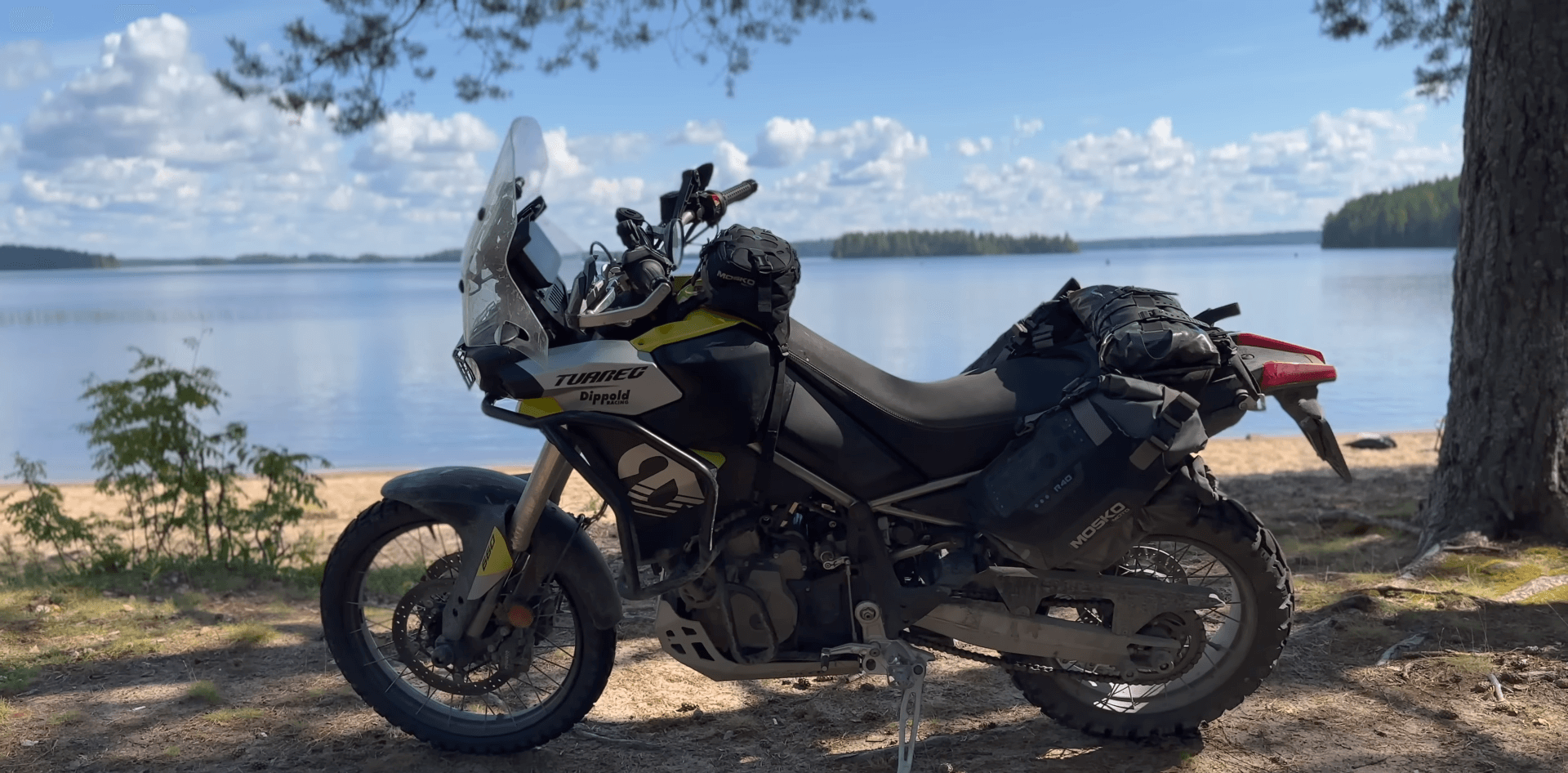
Compared to the Tenere 700, the Aprilia does have some vibrations, but they’re on par with the average mid-size engine. I’m not a fan of vibrating motorcycles, and I don’t find these vibrations off-putting. The only noticeable vibrations are slight ones on the footpegs, but they are not particularly bothersome. For a hardcore adventure bike that’s always fitted with all-terrain rubber, I would even forgive more significant vibrations.
The Tuareg engine doesn’t have a tendency to stall, unlike some modern Euro-5 engines. For example, many competing European bikes are very economical but have a tendency to stall near idle, a problem not typically seen in Euro-4 engines. However, the Tuareg does not have this issue – it doesn’t stall and runs smoothly throughout the entire rev range.
Tuareg fuel and range
The Tuareg is also economical, with no surprises in fuel consumption. In the mountains, it gets around 4 l/100 km, sometimes even dropping a bit lower. In traffic with cars at 90-100 km/h, it can even go down to 3.5 l/100 km, reducing the average consumption. On the highway at 130 km/h with cruise control, it consumes 4.5 l/100 km. According to the WMTC standard, its consumption is the lowest in its class, unless we consider the NC750X as a classmate.
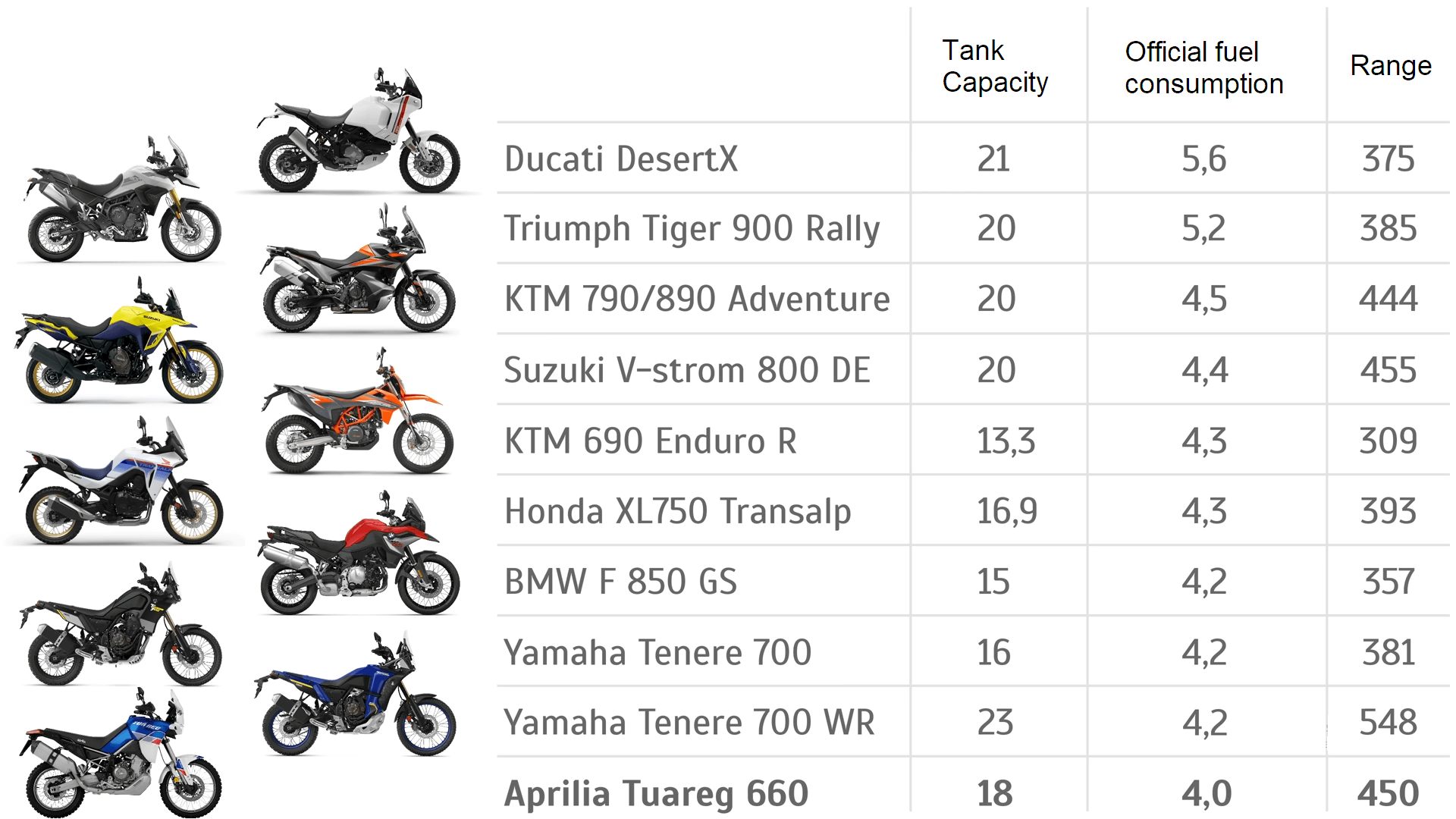
In some conditions, the Tuareg surprises with its efficiency, but for usual highway speeds, the Euro-5 Tenere has similar consumption, give or take. However, the Tenere has a smaller tank, which is noticeably different – the Tuareg offers a range of 450 km in almost any conditions, while I never achieved as much with the Tenere. Yes, there’s the Tenere World Raid, but it’s so tall you need a ladder to mount it. It’s in this class that tank range becomes more important than for sport-touring bikes.
The normal operation for such motorcycles isn’t on highways with plenty of gas stations, but on gravel and forest roads, which are great but typically lack gas stations. When running low on petrol, you have to leave the track to refuel and then return, losing about 40 minutes.
Riding Comfort
Now, let’s discuss ergonomics. One major drawback of the Tenere is its height, and in the World Raid version, it’s excessively tall. Furthermore, the Tenere’s suspension travel isn’t particularly remarkable, so there’s little room for lowering it. Yes, you can use lower links, but this alters the geometry – you can still ride, but it changes the motorcycle’s handling and balance. The Tenere’s weight distribution is easily disrupted, and one modification can spoil it. Lowering the seat is an option, but even if you buy a seat 2 cm lower, the Tenere will still be taller than its competitors.
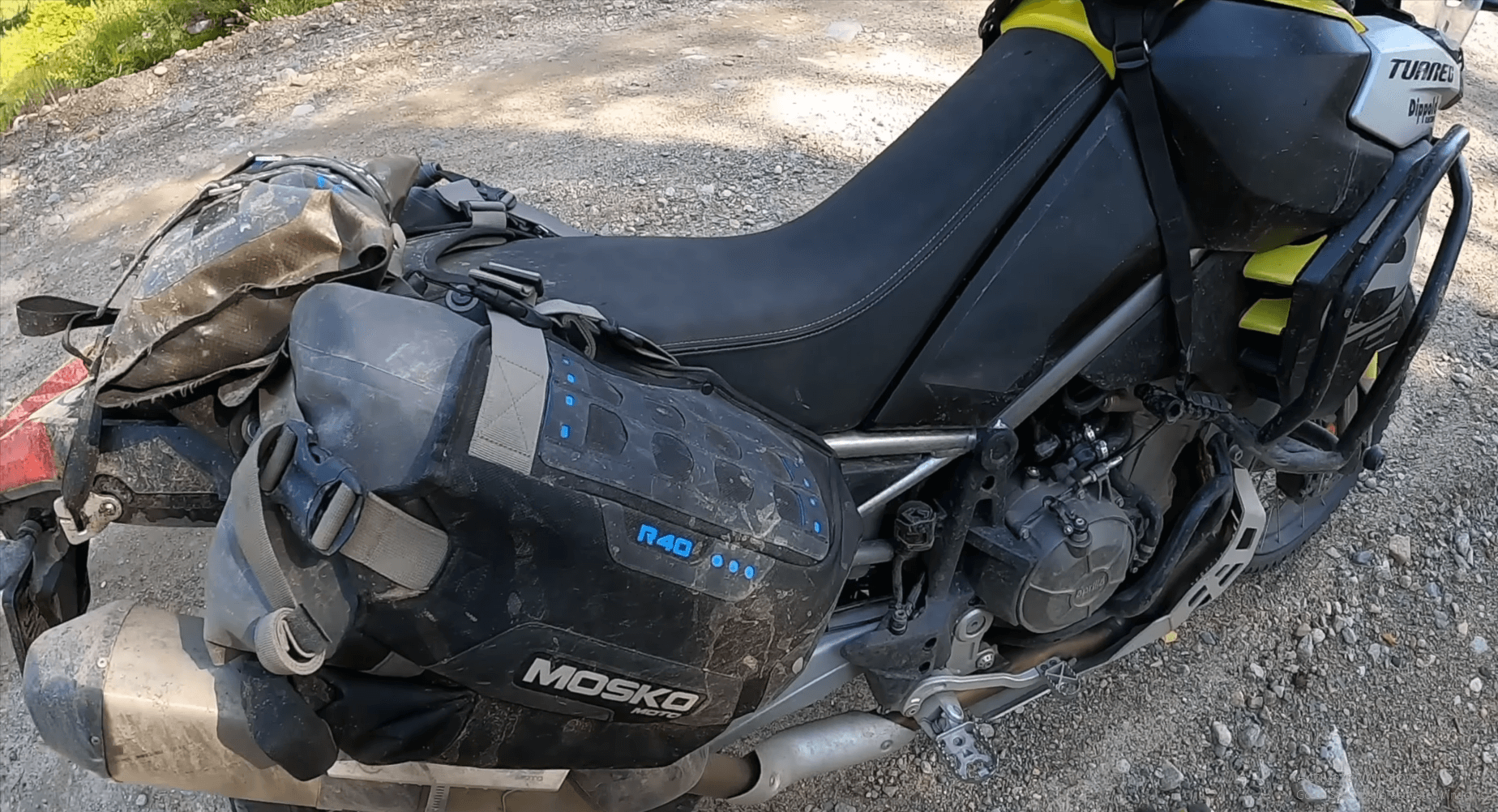
The Tuareg immediately intrigued me because it’s almost 2 cm lower than even the base Tenere, with the same ground clearance. In reality, it’s even better. The Aprilia has a narrower profile, so you don’t have to spread your legs as much as on the Tenere. I suspect the frame itself is made narrower. The situation is even more interesting off-road. Because the Tuareg is very stiff as standard, you loosen the preload more on the dirt for optimal performance. The Tenere suspension preload can also be decreased, but it becomes too soft. Additionally, the Tuareg’s suspension travel is much larger, and for off-road, it should sag lower, assuming that the ideal compression with rider on is 30% of the suspension travel. And since the preload is easily adjustable by hand without tools, it’s very practical. On the Tuareg, I’m much more comfortable with off-road settings – I can easily reach the ground with my feet slightly bent, while on the Tenere, I barely touch the ground. Normally, this doesn’t matter much, but sometimes you need to stabilize yourself with your foot or stand on uneven ground – with the Tuareg, there’s a lower chance of dropping the motorcycle. A greater sense of security allows for more adventurous riding.
Seat height is an important factor when choosing a motorcycle, although I still consider the KTM 790-890 the best choice for shorter riders – nothing has changed there yet. For those of medium and tall stature (175-180cm), the Tuareg is more convenient than the Tenere and 790.
In terms of ergonomics, it’s hard to find fault with the Tuareg, especially with my height of 180 cm. Nothing protrudes or gets in the way. The tank is well-shaped, and the seat is not too wide – everything is just right, making it easy to shift weight back and forth. It’s important to remember that the Tuareg is by far the lightest bike in its class, especially considering its full-size touring tank.
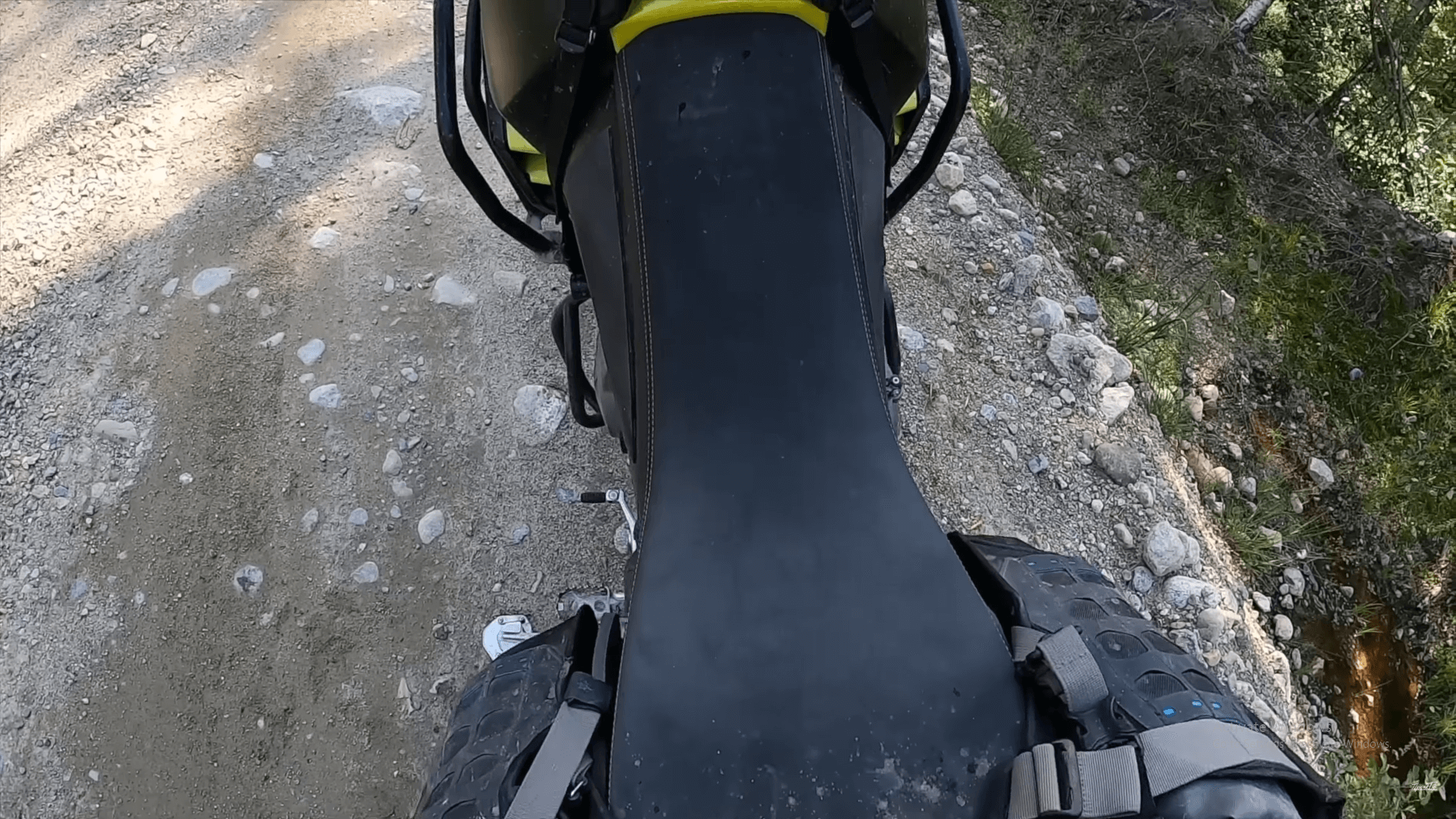
The handlebars are at the perfect height and width – noticeably wider than on the Tenere or 790. However, the handguards are externally rounded, so the overall width is similar to the Tenere. The standard mirrors are widely spaced – no issues with elbows, although the shape could be improved for wider inner parts with such a wide handlebar. Still, these are minor details. In this class, it still makes sense to install hinged mirrors. The seating position is ergonomically sound – the knees are relaxed, and the arms don’t stretch downwards.
The display and windscreen are set quite far forward. The display is always visible, both standing and sitting, without the need to lean in any direction. The display itself is bright, with a long peak above it protecting not so much from glare but from rain and dust.
When standing over the handlebar, the windshield still doesn’t interfere or get in the way. In short, the ergonomics are just as good as the Tenere’s, and significantly better for tall riders than the KTM’s. The seat is softer and more pleasant than on the Tenere and KTM, though you’ll still get tired of it eventually. This fatigue isn’t due to the seat’s filler, as it’s clear the seat doesn’t completely collapse under weight. Personally, my fatigue comes from its narrow shape. If we were talking about a motorcycle weighing 240 kg, I might complain, but here it’s more than acceptable. It’s definitely better than the Tenere’s seat, and you can get used to it.
The windscreen is short and narrow and has an indent in the middle that focuses ongoing air straight in the middle of the helmet. I hate it. At 80 km/h, riding is only possible with a fully closed visor. It doesn’t protect against insects, and on the highway, the helmet shakes noticeably. Sometimes, the micro-jerking of the helmet even causes double vision. I would either search for the aftermarket windshield or put on a wind deflector on top of the windshield.
I can easily list big adventure bikes that are more comfortable than the Tuareg, but they would all be 20-30 kg heavier and cost at least $5K more. Anyway, the Tuareg is much closer in comfort to liter bikes than to the KTM 690, DR650, etc. It’s a good middle ground.
But I’ll note two downsides – so no one says I’m glossing over anything. In my opinion, the Tenere has better lighting. The low beam on Tuareg is fine, but the high beam is somewhat inadequate. This can be solved with auxiliary lights.
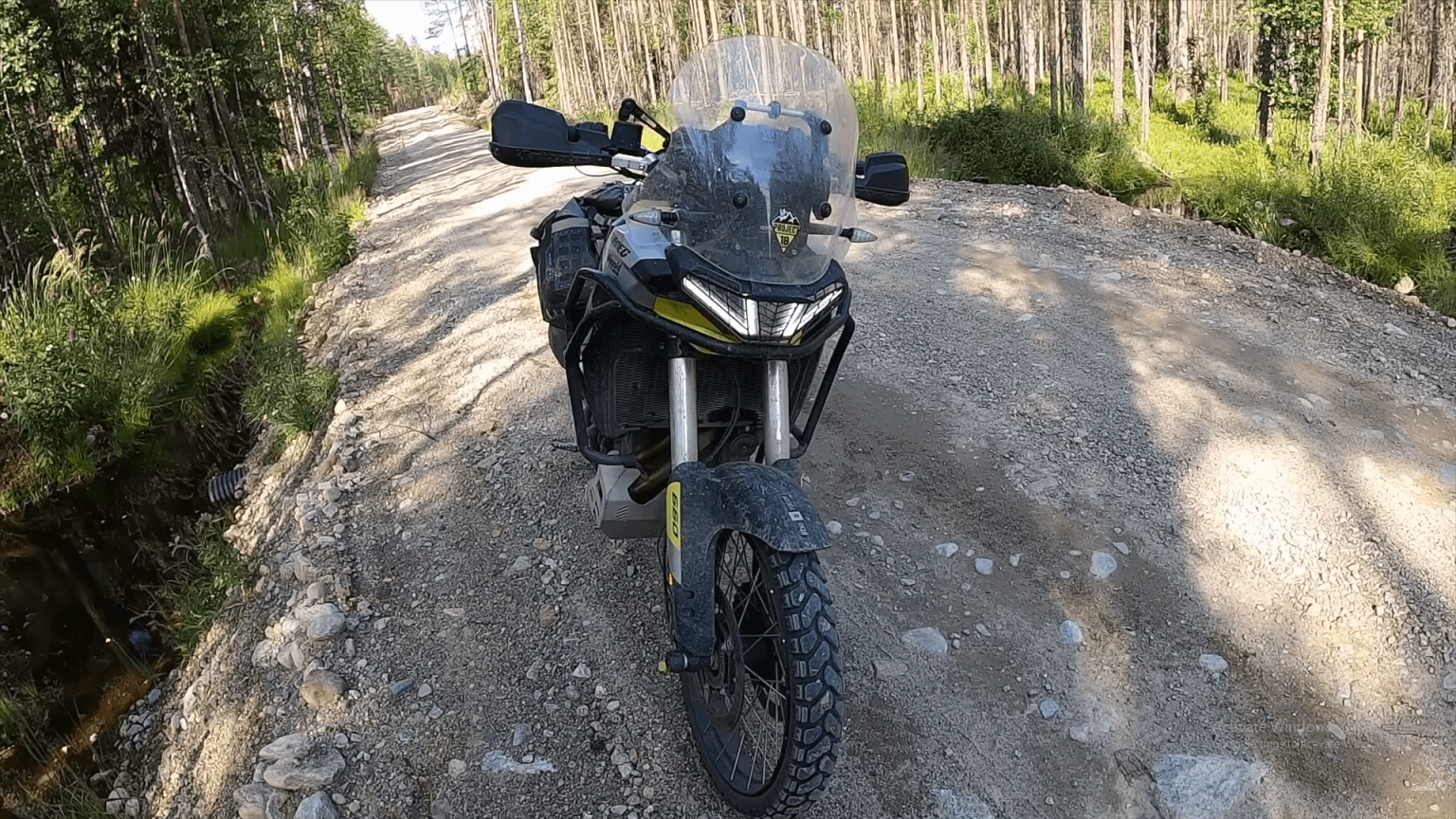
Also, I’m not a fan of the brakes. They are Brembo, and the discs are larger in diameter than the Tenere’s, but the feedback is specific – very smooth deceleration initially, then a sharper response. This is typical for Italian motorcycles, though I don’t prefer it. Some say it can be fixed by replacing the pads, but still, I prefer the brakes on the KTM 890 and the Tiger 900.
I’m sharing all this so you understand that you might need to make some adjustments to suit your preferences, but there’s nothing better if you want a really light, full-fledged adventure motorcycle.
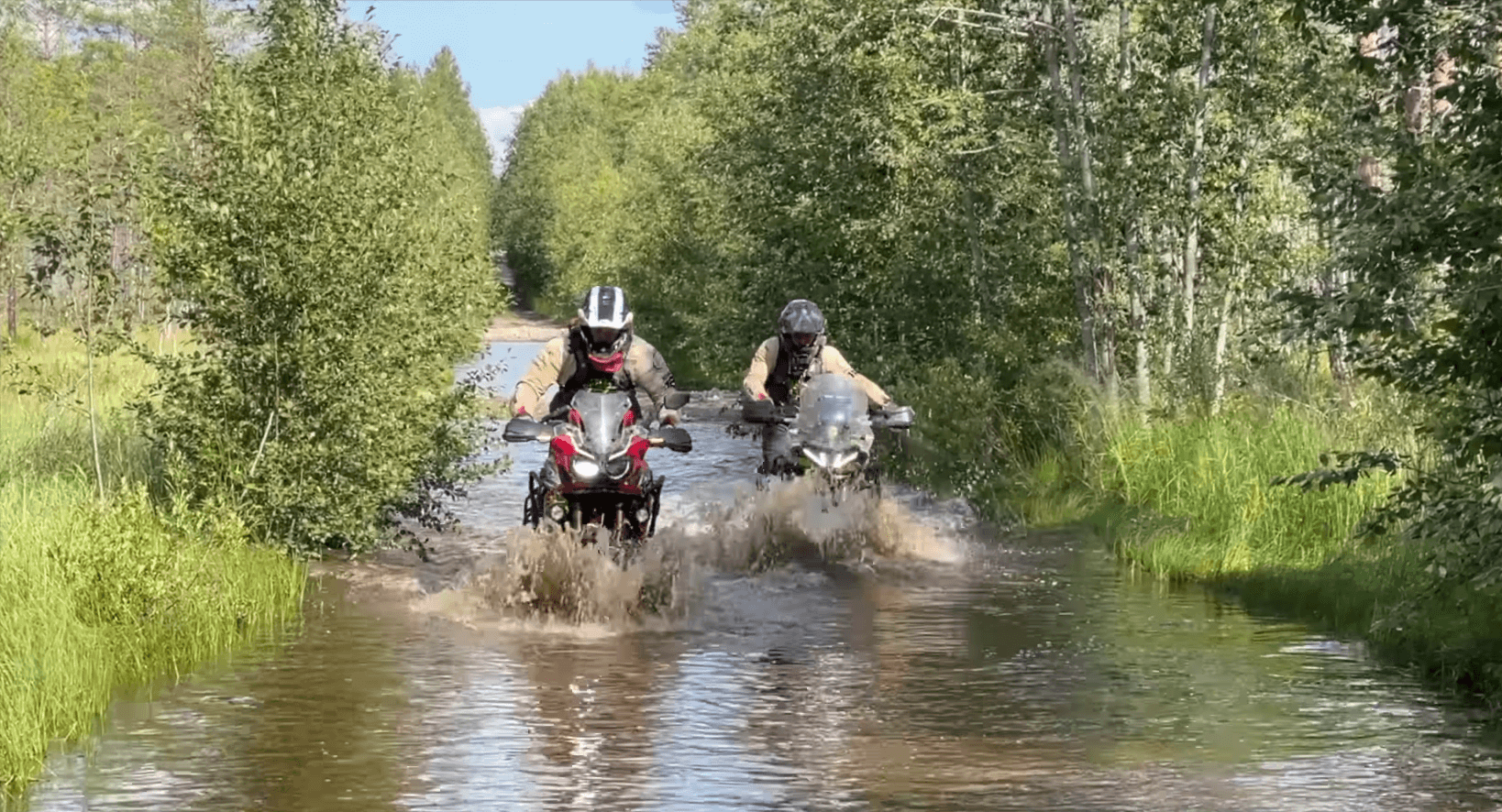
Bottom Line
The whole secret of the Tuareg is that Aprilia didn’t try to reinvent the wheel but instead carefully examined the excellent Tenere 700, which had been the leader for three years. Aprilia essentially did the same thing but listened to what people were asking from Yamaha. Specifically cruise control, and suspension improvements. While Yamaha was busy with its sales and not making significant updates, Aprilia took advantage and took action.
More than a year has passed since Tuareg’s sales began, and it hasn’t shown any serious, widespread problems to be concerned about. However, the Tuareg didn’t just appear out of nowhere; its engine was already proven in road models, and it hasn’t been plagued by recalls or major issues. It’s a rare situation where, for me, the Tuareg is so obviously the best in the mid-sized class that I wouldn’t hesitate for a second when choosing from new motorcycles.
